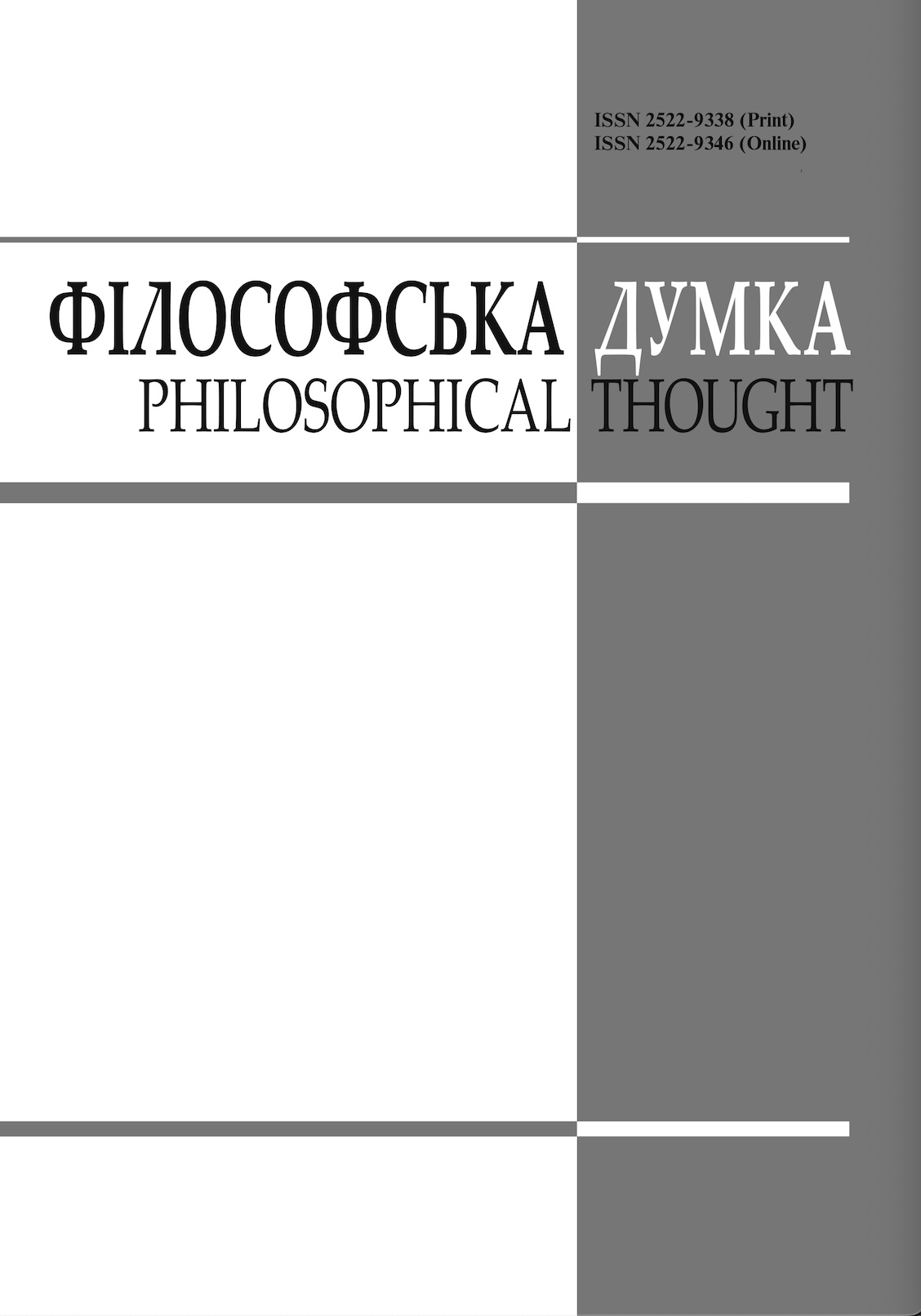LAUGHTER AS A SYMPTOM OF MODERNITY: ANALYSIS OF DEMARCATIONALITY AND INTERPASSIVITY OF LAUGHTER
YOUNG SCIENTIST'S PAGE
DOI:
https://doi.org/10.15407/fd2024.03.165Keywords:
place, hierarchy, contagion, identification, transgression, social norms, inappropriatenessAbstract
The author of the article aims to explore the functions and tasks of laughter in the context of modern life, as well as the difficulties that people face today, including stress and the search for identity. She proves this by refuting two common positions that exist in the academic space: 1) the understanding of laughter as a means of destroying hierarchy or as a transgressive force with the destructive potential to expose social ills; 2) the contagious nature of laughter. In the author's opinion, these positions are not able to describe and explain the phenomena taking place in the modern world.
Instead of interpreting laughter as a transgression of social roles, the author proposes to understand it as a means of demarcation, that is, as an act that affirms social roles rather than destroys them. According to the author, through the act of laughter, a person demonstrates not only an understanding of the essence of a joke, but also support for the values embedded in it. Using the Lacanian notion of paroisse and the analysis of designated places for laughter, the author argues that agreement with implicit values in a joke makes it possible to identify with a certain group of people, as common values are one of the factors that unite individuals. The joke and the reaction to it with laughter become a way of communication, where the subject identifies himself in the act of laughter. The author concludes that modern people assert their identity through laughter.
Using the example of contemporary comedy genres, the author demonstrates the emergence of a new interpassive function of laughter, which is opposed to its contagiousness. The interpassive nature of laughter has emerged due to the need of a modern person to replace their emotions. It can be seen as a symptom of the modern state of the subject, who is under constant stress. Due to the overloaded life, modern subject is forced to push emotions to the background. The culture of consumption and pleasure has become so widespread and accessible that the individual does not refuse certain ways of enjoyment, but transfers this function to other objects. The modern subject no longer has to take on the exhausting role of a laughing person, and thanks to the interpersonal nature of laughter, laughs and enjoys through the Other. The author concludes that such a transfer allows the modern person to feel that the action of laughter has been performed.
References
Arendt, H. (1981). The Life of the Mind (Combined 2 Volumes in 1). New York: Harvest Books.
Aristotle, (1967). Poetics. [In Ukrainian]. Kyiv: Mystetstvo.
https://doi.org/10.3998/mpub.7576
Bergson, H. (1913). Laughter. An essay on the meaning of the comic. New York: The Macmillan company.
Hobbes, T. (2000). Leviathan or The Matter, Form and Power of a Commonwealth Ecclesiastical and Civil. [In Ukrainian]. Kyiv: Duh i Litera.
Kant, I. (2007). Critique of Judgement. New York: Oxford University Press.
Kovaliv, Y.I. (2007). Encyclopedia of Literary Criticism : In 2 Vols. [In Ukrainian]. Kyiv: Tsentr uchbovoyi literatury.
Kurylo, A. (2021). The police "catch" not enough embarrassed people): In North Korea, it was forbidden to laugh and cry loudly. [In Ukrainian]. Retrieved from: https://tsn.ua/svit/ne-dostatno-zasmuchenih-vidlovlyuyut-policeyski-u-pivnichniy-koreyi-zaboronili-smiyatisya-i-guchno-plakati-1934992.html
Lacan, J. (1992). The Ethics of Psychoanalysis. London: Routledge.
Lacan, J. (2017). Formations of the Unconscious. Cambridge: Polity Press.
Levchuk, L.T. (Ed.). (2010). Aesthetics : Textbook. [In Ukrainian]. Kyiv: Tsentr uchbovoyi literatury.
Pinker, S. (1999). How the mind works. London: Penguin.
https://doi.org/10.1037/e412892005-002
Provine, R.R., Emmorey, K. (2006). Laughter among deaf signers. Journal of Deaf Studies and Deaf Education, 11(4), 403-409.
https://doi.org/10.1093/deafed/enl008
Schopenhauer, A. (2010). The World as Will and Representation. New York: Cambridge University Press.
Semeniuk, L. (2019). The nature of folk laughter culture and the phenomenon of low culture (the baroque period) in Ukraine. [In Ukrainian]. Synopsys: Tekst, Kontekst, Media, 25(1), 23-30.
https://doi.org/10.28925/2311-259x.2019.1.4
Žižek, S. (2019). How to Read Lacan. [In Ukrainian]. Kyiv: Komubook
Downloads
-
PDF (Українська)
Downloads: 128
Published
How to Cite
Issue
Section
License
Authors who publish with this journal agree to the following terms:
- Authors retain copyright and grant the journal right of first publication.
- Authors are able to enter into separate, additional contractual arrangements for the non-exclusive distribution of the journal's published version of the work (e.g., post it to an institutional repository or publish it in a book), with an acknowledgement of its initial publication in this journal.
- Authors are permitted and encouraged to post their work online (e.g., in institutional repositories or on their website) prior to and during the submission process, as it can lead to productive exchanges, as well as earlier and greater citation of published work (See The Effect of Open Access).


